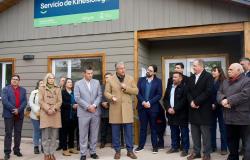However, as dairy consumption and production continues to grow, so too does the industry’s environmental footprint. In 2019, the EPA estimated that US dairy cattle emitted 1,729,000 tons of methane each year, pollution roughly equivalent to 11.5 million gasoline-powered cars being driven over the same period. A United Nations report found that the dairy sector’s global greenhouse gas emissions rose by 18 percent between 2005 and 2015.
Meanwhile, it’s not entirely clear that all these efforts are helping the average dairy farmer. The number of US dairy farms has failed by three quarters in the past 30 years, as farmers’ costs rise and milk prices fluctuate. Many small and midsize dairy farms have been driven out of business and farmers’ net returns fall below zero year after year. In 2000, farms with more than 2,000 cattle produced less than 10 percent of milk, but by 2016 farms of this size were responsible for more than 30 percent of US production. The diverging trend lines have prompted some farmers to question whether the focus on market growth above all else—which has been accompanied by increasing climate pollution and the collapse of small dairy herds—is still the best policy.
Ever since Congress passed the Dairy Act in the 1980s, farmers have been required to pay 15 cents per hundred-weight of milk (equivalent to a little less than 12 gallons) toward industry promotion programs overseen by the US Department of Agriculture, or USDA. Ten cents are sent to local promotion entities, and the remaining five cents go to the national Dairy Board, which promotes all dairy products. (Eggs have their own $20 million program.) Farmer contributions to the national program totaled $124.5 million in 2021.
The Dairy Board in turn sends money to Dairy Management. Milk processors work under a similar structure, paying their own assessments to the Fluid Milk Board, which works exclusively on promoting a category that includes milk, flavored milk, buttermilk, and eggnog. The Fluid Milk Board received $82.4 million in processor fees in 2021. Its marketing arm is called MilkPEP.
In an emailed statement, a Dairy Management spokesperson told Grist that “all dairy research, promotion content and information not only complies with all regulations and standards, but also seeks to help consumers make informed decisions about the foods they choose for themselves and their families, including nutritious, sustainably produced dairy.”
The financial structure of these efforts is complicated, but the end result is that these programs, which are known to farmers as “checkoffs,” bring in more than $200 million each year in the dairy industry alone. As a result, the industry takes care to note its accomplishments. For instance, in the first eight years the checkoff partnered with Domino’s Pizza, the average store increased its cheese use by 43 percent.
Other promotional efforts, however, have amounted to slickly-produced flops. Last year, the Fluid Milk Board hired actor Aubrey Plaza to hawk “wood milk” in an apparent effort to lampoon plant-based milk alternatives, which resulted in a formal complaint filed by a group of physicians who advocate for plant-based diets. Another effort involved a board-funded website featuring Queen Latifah, who was devoted to combating the seemingly fictional phenomenon of “milk shaming.”






